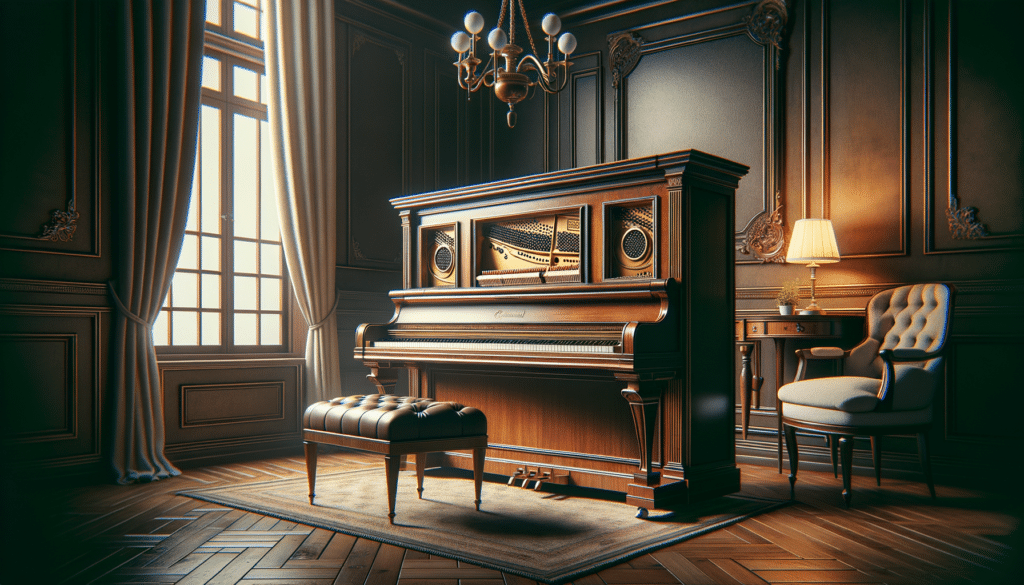The Piano: An Instrument of Elegance and Artistry
The piano, a symbol of elegance and sophistication, has been a central piece in music for centuries. Its ability to convey a wide range of emotions makes it a favorite among musicians and listeners alike. The piano’s versatility is unmatched, allowing it to fit seamlessly into various genres, from classical to jazz and contemporary music. As an instrument, it not only serves as a medium for musical expression but also as a tool for learning and discipline. The piano’s structure, with its array of keys, offers a visual representation of music theory, making it an excellent choice for beginners and seasoned musicians.
Playing the piano involves both physical and mental engagement, fostering creativity and concentration. It encourages the development of fine motor skills and enhances hand-eye coordination. Furthermore, learning to play the piano can improve cognitive abilities, such as memory and problem-solving skills. The piano’s role in music education is significant, as it lays the foundation for understanding complex musical concepts and compositions.
For those considering bringing a piano into their home, it’s important to understand the impact it can have. A piano is not just an instrument; it is a piece of furniture that adds a touch of class and style to any space. Its presence can inspire creativity and provide a source of entertainment and relaxation. Whether you are a novice or an experienced player, the piano invites you to explore the world of music and discover the joy of creating beautiful sounds.
Piano Restoration: Breathing New Life into Vintage Instruments
Piano restoration is an art form that involves bringing old and worn-out pianos back to their former glory. This process requires a deep understanding of the instrument’s mechanics and history. Restoring a piano is not just about fixing what is broken; it is about preserving the instrument’s character and ensuring its longevity. The process can be meticulous, involving tasks such as repairing or replacing keys, strings, and hammers, as well as refinishing the piano’s exterior.
The benefits of piano restoration are manifold. Firstly, it allows owners to retain the sentimental value attached to a beloved instrument. Many pianos have been passed down through generations, carrying with them stories and memories. Restoration ensures that these instruments can continue to be enjoyed by future generations. Secondly, restored pianos often have a unique sound that modern instruments cannot replicate. The materials and craftsmanship used in vintage pianos contribute to their distinctive tone and resonance.
For those interested in piano restoration, it is essential to work with experienced professionals who understand the nuances of different piano models and eras. A well-restored piano can be a valuable investment, both financially and musically. It can transform a neglected instrument into a centerpiece of musical and aesthetic beauty in any home.
Classic and Vintage Pianos: A Journey Through Time
Classic and vintage pianos offer a glimpse into the rich history of music and instrument craftsmanship. These pianos, often handcrafted with exquisite attention to detail, represent the pinnacle of musical instrument design from their respective eras. Each vintage piano tells a story, reflecting the musical trends and technological advancements of its time.
One of the most appealing aspects of classic pianos is their construction. Many were built with materials that are no longer commonly used, such as ivory keys and exotic wood veneers. This craftsmanship results in a unique aesthetic and sound quality that modern pianos often strive to emulate. The tonal quality of these instruments is often described as warm and full, providing a depth of sound that is highly sought after by musicians and collectors.
Owning a vintage piano is akin to owning a piece of history. These instruments can serve as conversation pieces and are often cherished for their historical significance. They can also be a source of inspiration for musicians, offering a connection to the great composers and performers of the past. For collectors and enthusiasts, classic pianos are not just instruments but treasures that embody the spirit of an era.
When considering the purchase of a vintage piano, it is crucial to assess its condition and provenance. Working with knowledgeable dealers and restorers can ensure that you acquire an instrument that will bring joy and beauty to your home for years to come.
The Art of Choosing the Right Piano for Your Home
Choosing the right piano for your home involves considering several factors, including space, budget, and personal preference. Whether you are drawn to the grandeur of a grand piano or the compact elegance of an upright, each type offers unique benefits and challenges.
Grand pianos, with their larger size and horizontal strings, provide a rich and powerful sound. They are favored by professional musicians and those with ample space to accommodate their size. Upright pianos, on the other hand, are more suitable for smaller spaces while still delivering a satisfying musical experience. They are often chosen for their affordability and versatility, making them a popular choice for beginners and casual players.
When selecting a piano, it is important to consider the acoustics of the room where it will be placed. The size and shape of the room can affect the instrument’s sound, so it is advisable to test the piano in the intended space whenever possible. Additionally, the piano’s finish and style should complement the home’s decor, as it will likely become a focal point in the room.
Ultimately, the choice of a piano should reflect the player’s needs and aspirations. Whether you are looking for a practice instrument or a showpiece for performances, the right piano can enhance your musical journey and bring lasting joy to your household.
Maintaining Your Piano: Tips for Longevity and Performance
Proper maintenance is crucial to preserving the sound and longevity of your piano. Regular care ensures that the instrument remains in optimal playing condition and retains its value over time. Key maintenance tasks include tuning, cleaning, and regulating the piano’s action.
Pianos should be tuned at least once or twice a year, depending on usage and environmental conditions. Tuning involves adjusting the tension of the strings to ensure that each note is in harmony with the others. This task is best performed by a professional technician who can also assess the overall condition of the instrument.
Cleaning the piano’s exterior and keys is another important aspect of maintenance. Dust and dirt can accumulate on the surface and in the action, affecting the piano’s appearance and performance. Using a soft cloth and appropriate cleaning products can help maintain the piano’s finish and prevent damage.
Regulation involves adjusting the mechanical parts of the piano to ensure that it plays smoothly and responds accurately to the player’s touch. This process can address issues such as uneven key response or sluggish action, enhancing the overall playing experience.
By following these maintenance tips, piano owners can enjoy the instrument’s beauty and sound for many years. A well-cared-for piano is not only a joy to play but also a testament to the owner’s commitment to preserving a cherished piece of musical history.


